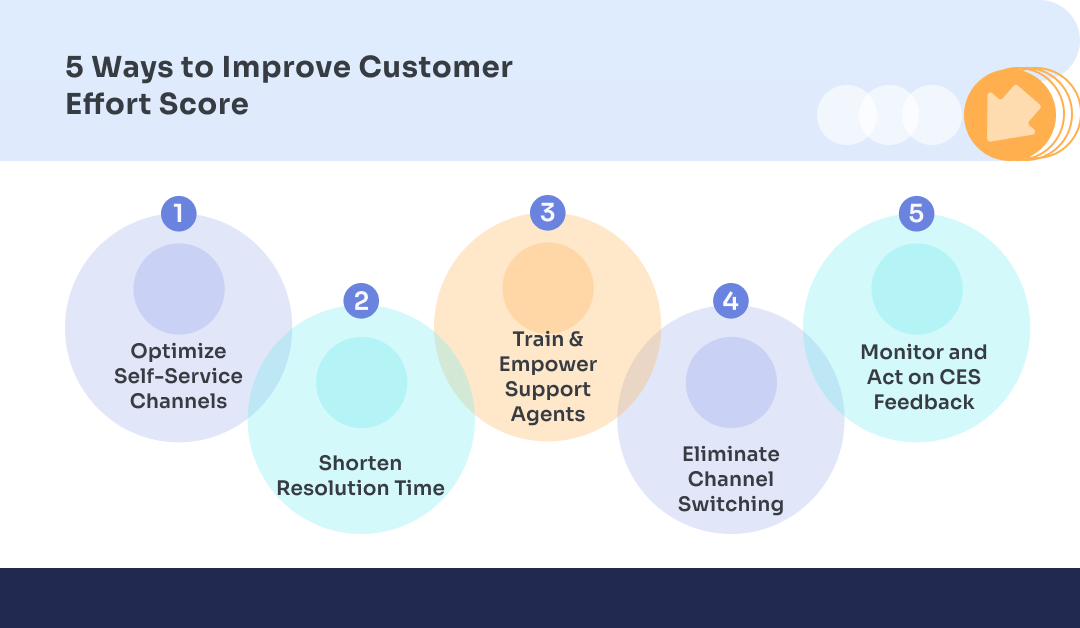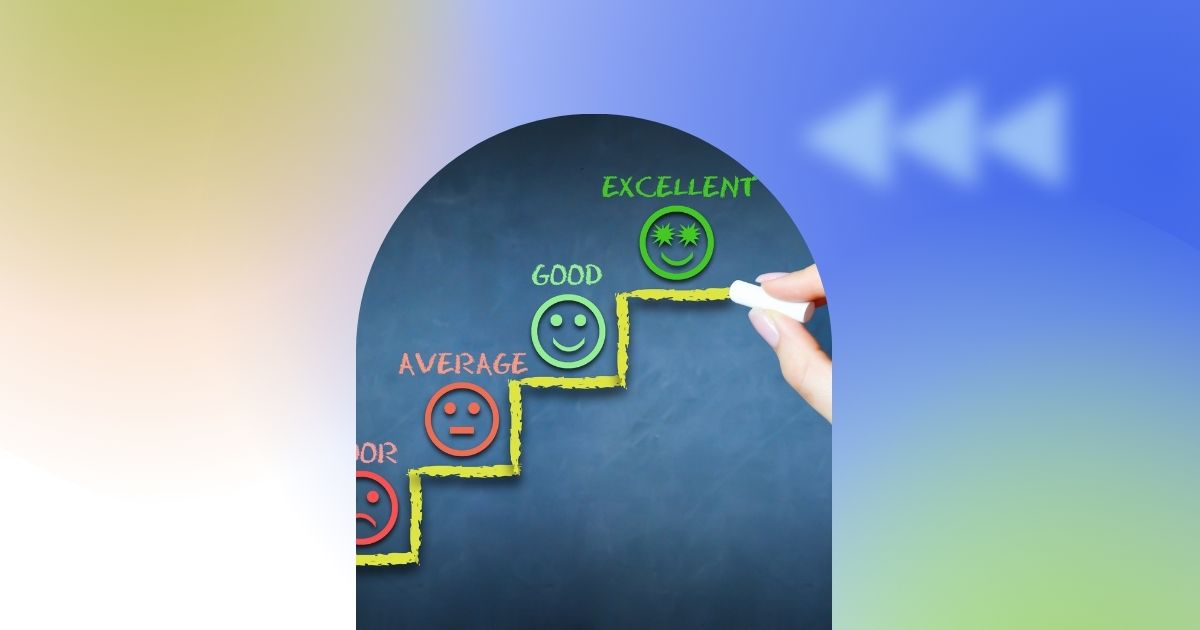How easy is it for your customers to get help when they need it most? Whether they’re tracking an order, resolving a billing issue, or setting up your software for the first time, their experience can make or break long-term loyalty. And that’s why having a low customer effort score is really a non-negotiable.
CX is a simple, but powerful metric that measures how much effort a customer has to put in to get an issue resolved. The lower the effort, the better the experience, and the higher the chance they’ll stick around. While many companies focus on satisfaction or loyalty, customer effort score gets to the root of customer frustration. Reducing friction leads to faster resolutions, happier customers, and ultimately, stronger customer retention.
In this guide, we’ll break down what customer effort score actually is, why it matters, and five proven ways to lower it across your support operations. You’ll also learn how a managed solution like ScaleSupport can help you optimize your support processes and improve CES without overloading your in-house team.
What is Customer Effort Score (CES)?
Customer Effort Score (CES) is a key customer experience (CX) metric that measures how easy (or difficult) it was for a customer to get their issue resolved. It typically comes in the form of a single post-interaction survey question, such as: “How easy was it to get the help you needed today?” The answers would fall on a range from very easy to very difficult.
The goal is simple: find out how much work your customers feel they’re doing. A low CES score is a big red flag, indicating that your processes might be too complicated, your support team too slow, or your channels too fragmented. All of these factors will contribute to increased frustration from your customers and a poor customer experience.
CES vs. CSAT vs. NPS
While CES is focused on effort, the are other CX metrics which you might run into that serve different purposes:
- CSAT (Customer Satisfaction) asks how satisfied a customer was with a specific interaction.
- NPS (Net Promoter Score) gauges how likely a customer is to recommend your brand to others.
Where CSAT and NPS reflect emotions or loyalty over time, CES is often more predictive of churn or retention. In fact, research from Gartner found that 96% of customers who had a high-effort service experience became more disloyal, compared to just 9% of low-effort customers.
Where CES Is Most Useful
CES surveys are typically sent after:
- A support ticket is closed
- A customer completes a live chat or phone call
- An onboarding session or product walkthrough
- An order is delivered or an issue is resolved
Imagine a customer trying to cancel a subscription. If they need to search for hours (or even minutes) for a cancellation page, repeat themselves to multiple reps, or wait days for a reply, then that’s a high-effort experience. Even if it’s eventually resolved, they’re far less likely to return. A simple, well-guided cancellation process with immediate confirmation could leave them more satisfied, even if they leave your service.
Why Customer Effort Score Matters in CX
Customer loyalty isn’t built solely on having a high-quality product or service, or even a high-quality experience. It’s built on ease. The less effort customers need to use, the more likely they are to stay, buy again, and speak positively about your brand.
In the same study by Gartner that was referenced above, 94% of customers who experienced a low-effort service interaction expressed an intent to repurchase, compared to just 4% of those who had a high-effort experience. In other words, effort is one of the most reliable predictors of loyalty.
What a High-Effort Experience Feels Like
Let’s consider a customer who is reaching out via live chat to update their shipping address. They’re told to call a different department. On the call, they have to repeat all their information, only to be transferred again. By the end of the process, a simple request has turned into a 45-minute ordeal. That’s a high-effort journey, and one that directly impacts customer satisfaction and trust.
Now flip it: imagine that same customer clicks into their account portal and updates their shipping address in two taps, with confirmation sent instantly. No tickets, no transfers, no unnecessary steps. That’s a low-effort experience, and one they’ll likely remember positively.
Effort can spike at any point in the customer journey: during onboarding, product use, troubleshooting, or even cancellation. That’s why CES is so powerful. It pinpoints the exact moment where friction is getting in the way of loyalty. Tools like AI chatbots, ticket management systems, and help centers can improve these moments, but only if they’re set up with the customer’s ease in mind. A misconfigured bot or a dead-end FAQ article can make things even more complicated.
5 Ways to Improve Customer Effort Score

Improving your customer effort score doesn’t mean you have to completely overhaul your entire support system. It starts with making strategic changes where they matter most: key customer touchpoints. And from there, you can continue to optimize. Here are five proven ways to lower effort, reduce customer friction, and improve customer experience.
1. Optimize Self-Service Channels
Today’s customers want to help themselves (if you let them). Survey data from Zendesk found that 67% of respondents preferred using self-service support channels over speaking to a company rep. But if your help center is outdated or your chatbot hits a dead end, they’re forced to exert more effort.
What to improve:
- Help centers: Keep articles updated, searchable, and aligned with real support queries.
- Chatbots: Use AI-powered bots to deflect common questions, route issues, and offer instant solutions—without frustrating loops.
- On-site FAQs: Make answers contextual and available at the point of need (checkout page, account settings, etc.)
Scale’s CSRs can build, maintain, and monitor your self-service support tools to keep them updated with real customer queries, new product details, and knowledge base articles that truly reduce effort.
2. Shorten Resolution Time
When a customer reaches out, speed definitely matters, but so does how quickly the right person handles the issue. Delays due to manual routing, backlogged queues, or miscommunication increase the perceived effort from the customer’s point of view. According to HubSpot, 90% of customers rate an “immediate” response as important or very important, and 60% of those surveyed defined “immediate” as under 10 minutes.
What to improve:
- Automated ticket routing: Use call tagging, keywords, and categories to assign tickets to the right agent instantly.
- First contact resolution: Empower agents to resolve issues without escalation whenever possible.
- Internal knowledge bases: Give reps access to product info, policies, and customer history to avoid unnecessary delays.
Scale CSRs are backed by a dedicated Success Manager and real-time supervision, allowing them to maintain short resolution times and escalate only when necessary. Many clients use Scale to reduce backlogs, offer after-hours support, and ensure fast, consistent responses.
3. Train & Empower Support Agents
The person on the other end of the conversation often determines how easy (or painful) a support experience feels. When agents are confident, empathetic, and well-informed, they are able to resolve issues quickly and clearly. But when they’re undertrained, restricted by unnatural or AI-sounding scripts, or constantly having to escalate issues to other teams, the result is a high-effort experience that frustrates customers and slows down resolution time. Agent empowerment means giving your team not just knowledge, but also the trust and tools to act on it.
What to improve:
- Agent onboarding and continuing education
- Soft skills training in empathy, clarity, and tone
- Access to customer history and internal tools
- Policies that allow for real-time decision-making
ScaleSupport’s CSRs go through a structured onboarding process followed by role-specific training tailored to your brand. Our internal Training & Development team works with you to build knowledge bases, SOPs, and product guides so that reps know your tools inside and out. We also upskill agents continuously, helping them respond with accuracy and confidence while reducing the number of escalations.
4. Eliminate Channel Switching
There are very few things that will annoy your customers more than being bounced from channel to channel, or worse, from agent to agent. When people have to repeat themselves, dig up past ticket numbers, or wait for callbacks, their perception of your brand takes a hit. This type of fragmented experience is a major contributor to poor CES in customer service. Reducing effort here means making support feel seamless and consistent, no matter where the interaction starts.
What to improve:
- Integrate CRM and helpdesk platforms
- Use omnichannel tools that unify conversations
- Ensure agents have full visibility across channels
- Avoid siloed teams (sales, support, billing, etc.)
ScaleSupport offers dedicated, omnichannel support teams who operate across your preferred platforms without missing a beat, whether that’s through live chat, email, phone, or social. Every agent has access to customer context and previous conversations, thanks to integrated tools and real-time supervision. This means your customers can pick up the conversation where they left off, with no repetition or confusion.
5. Monitor and Act on CES Feedback
You can’t improve what you don’t measure, and that includes customer effort. Customer effort score surveys help identify friction points in your support journey, but the real value lies in the changes you make in response to the feedback. Businesses that consistently track and analyze CES are better equipped to refine their workflows, improve agent training, and proactively address problem areas before they negatively impact loyalty.
What to improve:
- Set up CES surveys post-interaction
- Tag responses by team, product, or issue type
- Review CES data alongside CSAT and NPS
- Prioritize recurring high-effort issues in QA
ScaleSupport can help you roll out CES and other CX metrics through integrated survey tools and post-interaction workflows. Our team can tag and organize responses, flag friction points, and even assist with reporting or cross-metric analysis. Plus, your Customer Success Manager can help turn insights into action, such as retraining agents or optimizing workflows based on real customer feedback.
How ScaleSupport Helps You Improve CES
Lowering your customer effort score requires more than just good intentions; it demands the right people, processes, and tools all working together seamlessly. That’s where ScaleSupport can be your biggest asset.
ScaleSupport is a fully managed customer support solution that helps businesses reduce customer friction and improve customer experience at scale. Every CSR is 100% dedicated to your brand, meaning they become familiar with your products, workflows, and customer expectations over time. This level of ownership helps reduce repetitive questions, avoid escalations, and create faster, more effortless resolutions.
Behind every CSR is a built-in support system:
- Customer Success Manager for quality and performance oversight
- Training & Development team to onboard and upskill agents
- Supervisors and QA managers for continuous improvement
- Scale Workspace App for seamless delegation, chat, screen recordings, and task tracking
Whether you’re looking to reduce resolution times, eliminate channel switching, or improve self-service tools, ScaleSupport is built to meet your needs. Our teams work with platforms like Intercom, Zendesk, Freshdesk, Gorgias, and more, and we integrate right in with your tools and processes. The result of this? Lower effort, higher customer satisfaction, and long-term customer loyalty, without the cost or complexity of building an in-house team.
Rethink Support Through the Lens of Effort
When trying to improve CX, many businesses overlook one of the most important levers: effort. A high customer effort score signals frustration, delays, and disjointed service. These factors directly undermine retention, satisfaction, and loyalty. But with the right strategy, reducing effort can become your competitive market advantage!
Start by looking at your current support experience. Where are customers getting stuck? Where do they have to repeat themselves? What questions keep showing up? By monitoring CES and addressing these issues through faster resolutions, better self-service, and empowered agents, you can improve every stage of the customer journey.
And if you’re ready to take things to the next level, ScaleSupport can help. We make it easy to optimize your support operations, deploy dedicated, high-quality CSRs, and reduce effort across all channels. Explore ScaleSupport’s services today, and schedule a free consultation to learn how we can improve your CES and CX outcomes.

Dianne has extensive experience as a Content Writer, she creates engaging content that captivates readers and ranks well online. She stays on top of industry trends to keep her work fresh and impactful. She has a talent for turning complex ideas into relatable stories. When she’s not writing, you’ll probably find her with a crochet hook in hand or working on a fun craft project. She loves bringing creativity to life, whether it’s through words or handmade creations.






